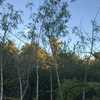
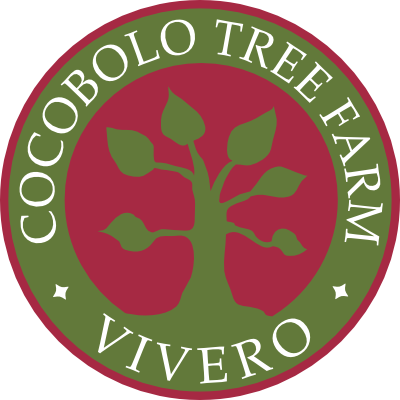
Ornamental & Shade Trees
56 plants found. Return to All Plants.Sort By Name: Spanish | English | Scientific
 Cocobolo | Rosewood | Dalbergia retusa |
Description. Cocobolo, better known as Rosewood, is a hardwood of exceptional beauty and highly valued. It is a medium sized tree with a dark trunk is twisted with vertical fissures and it has alternate compound leaves. Although not an aesthetically attractive shape because of its popularity and demand it is now placed on the endangered species list in Costa Rica. The wood contrasts greatly from the sapwood of a creamy yellow to the deep red of the heartwood. It is been...
Cocobolo | Rosewood | Dalbergia retusa |
Description. Cocobolo, better known as Rosewood, is a hardwood of exceptional beauty and highly valued. It is a medium sized tree with a dark trunk is twisted with vertical fissures and it has alternate compound leaves. Although not an aesthetically attractive shape because of its popularity and demand it is now placed on the endangered species list in Costa Rica. The wood contrasts greatly from the sapwood of a creamy yellow to the deep red of the heartwood. It is been...
 Guanacaste | Guanacaste | Enterolobium cyclocarpum |
Description: This majestic tree, known particularly in the dry forest of Guanacaste, Costa Rica is recognized for its elegant, tall, wide spreading canopy that exposes its branches and leaf structure. The grey trunk can be a smooth but usually has fissures and lenticels. The small twice compound leaves fold at night and have a fern-like feel. The flower is visually inconsequential but is very fragrant. Its unique seedpod is called “monkey ear” by the...
Guanacaste | Guanacaste | Enterolobium cyclocarpum |
Description: This majestic tree, known particularly in the dry forest of Guanacaste, Costa Rica is recognized for its elegant, tall, wide spreading canopy that exposes its branches and leaf structure. The grey trunk can be a smooth but usually has fissures and lenticels. The small twice compound leaves fold at night and have a fern-like feel. The flower is visually inconsequential but is very fragrant. Its unique seedpod is called “monkey ear” by the...
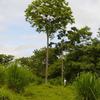 Cedro amargo | Spanish Cedar | Cedrela odorata |
Spanish cedar is a deciduous tree ranging from medium to large. Its young bark is smooth gray but becomes furrowed and sometimes turns to brown with small buttresses with age. It is native from Mexico down to South America and the West Indies. The flowers and fresh cut wood have a distinctive garlic-like smell. Benefits Desirability: Cedro amargo line the streets of San José. This tree has a pink reddish wood. It is valued by construction and...
Cedro amargo | Spanish Cedar | Cedrela odorata |
Spanish cedar is a deciduous tree ranging from medium to large. Its young bark is smooth gray but becomes furrowed and sometimes turns to brown with small buttresses with age. It is native from Mexico down to South America and the West Indies. The flowers and fresh cut wood have a distinctive garlic-like smell. Benefits Desirability: Cedro amargo line the streets of San José. This tree has a pink reddish wood. It is valued by construction and...
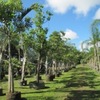 Acacia mangle | Magnum | Acacia mangium Willd. |
Acacia mangium grows up to 30 metres (98 ft), often with a straight trunk. A. mangium has about 142,000 seeds/kg.[3] To break down dormancy mature seed requires pre-germination treatments such as mechanical scarification (scratching the surface) or boiling water. This treatment leads to a fast germination and typically exceeds 75%.[4] Like many other legumes, it is able to fix nitrogen in the soil.[5]A. mangium is a popular species for forest...
Acacia mangle | Magnum | Acacia mangium Willd. |
Acacia mangium grows up to 30 metres (98 ft), often with a straight trunk. A. mangium has about 142,000 seeds/kg.[3] To break down dormancy mature seed requires pre-germination treatments such as mechanical scarification (scratching the surface) or boiling water. This treatment leads to a fast germination and typically exceeds 75%.[4] Like many other legumes, it is able to fix nitrogen in the soil.[5]A. mangium is a popular species for forest...
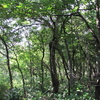 Guayacan carboncillo | Malvecino | Acosmium panamense |
Native to southern Mexico and all of Central America.The wood is hard, heavy, strong, and resistant. Used in rural areas for construction. The bark is used for malaria. bleeding, and other medical reasons.
Guayacan carboncillo | Malvecino | Acosmium panamense |
Native to southern Mexico and all of Central America.The wood is hard, heavy, strong, and resistant. Used in rural areas for construction. The bark is used for malaria. bleeding, and other medical reasons.
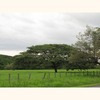
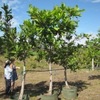 Espavel | Wild Cashew | Anacardium excelsum |
Distribution: Costa Rica south through Panama to Colombia, Venezuela, and Ecuador. Frequently found in coastal areas on well-drained soils. Almost pure stands report in the Darien Province of Panama.The Tree: Commonly attains diameters of 3 to 5 ft, total height frequently ranges from 75 to 150 ft. Forest-grown trees often have clear boles 30 to 60 ft. Some basal swelling but no well- developed buttress.The Wood:General...
Espavel | Wild Cashew | Anacardium excelsum |
Distribution: Costa Rica south through Panama to Colombia, Venezuela, and Ecuador. Frequently found in coastal areas on well-drained soils. Almost pure stands report in the Darien Province of Panama.The Tree: Commonly attains diameters of 3 to 5 ft, total height frequently ranges from 75 to 150 ft. Forest-grown trees often have clear boles 30 to 60 ft. Some basal swelling but no well- developed buttress.The Wood:General...
 Almendro de Rio, carne asada | River Almond, Roast Beef Tree | Andira inermi |
This native tree is a slow grower found near river and streams. Its yellowish dark wood is durable and used for a variety of heavy duty construction purposes but also used in fine furniture. The dark gray trunk discards its plates which exposes a red color, which is why it is referred to sometimes as the roast beef tree.
Almendro de Rio, carne asada | River Almond, Roast Beef Tree | Andira inermi |
This native tree is a slow grower found near river and streams. Its yellowish dark wood is durable and used for a variety of heavy duty construction purposes but also used in fine furniture. The dark gray trunk discards its plates which exposes a red color, which is why it is referred to sometimes as the roast beef tree.
 Uva de Selva | Wood Grape | Ardesia |
xxx
Uva de Selva | Wood Grape | Ardesia |
xxx
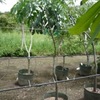 Ronrón | Ron Ron | Astronium graveolens |
Native to Central America this flowering tree is in the Cashew family. The leaves turn red and make a nice contrast to other vegetation.
Ronrón | Ron Ron | Astronium graveolens |
Native to Central America this flowering tree is in the Cashew family. The leaves turn red and make a nice contrast to other vegetation.
 Neem, Paraiso | Neem | Azadirachta indicha |
Neem is one of two species in the genus Azadirachta, and is native to India, Pakistan, and Bangladesh growing intropical and semi-tropical regions. It is a fast-growing tree that can reach a height of 15–20 metres (49–66 ft), rarely to 35–40 metres (115–130 ft). It is evergreen, but in severe drought it may shed most or nearly all of its leaves. The branches are wide and spreading. The fairly dense...
Neem, Paraiso | Neem | Azadirachta indicha |
Neem is one of two species in the genus Azadirachta, and is native to India, Pakistan, and Bangladesh growing intropical and semi-tropical regions. It is a fast-growing tree that can reach a height of 15–20 metres (49–66 ft), rarely to 35–40 metres (115–130 ft). It is evergreen, but in severe drought it may shed most or nearly all of its leaves. The branches are wide and spreading. The fairly dense...
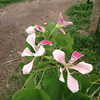 Matrimonia arbole | Orchid Tree, Camel's Foot | Bauhinia arborea |
Bauhinia variegata is a very popular ornamental tree grown in subtropical and tropical climates. Known for its scented flowers, it is native to southeastern Asia, from southern China west to Pakistan and India. It is a small to medium-sized tree growing to 10–12 m tall, deciduous in the dry season. Great addition to a garden. Hummingbirds are attracted to the flowers.
Matrimonia arbole | Orchid Tree, Camel's Foot | Bauhinia arborea |
Bauhinia variegata is a very popular ornamental tree grown in subtropical and tropical climates. Known for its scented flowers, it is native to southeastern Asia, from southern China west to Pakistan and India. It is a small to medium-sized tree growing to 10–12 m tall, deciduous in the dry season. Great addition to a garden. Hummingbirds are attracted to the flowers.
 Golden spoon | Nance | Byrsonima crassifolia |
Byrsonima crassifolia is a slow growing large shrub or tree that is native to tropical America. It is valued and therefore sometimes cultivated for its small, sweet, yellow fruit, which are strongly scented. We love the the shape of the tree, the trunk texture, and the flowers and fruit. We have several mature wild ones on our finca that bring us, the birds, and squirrels,(and who knows what other creatures) great delight!
Golden spoon | Nance | Byrsonima crassifolia |
Byrsonima crassifolia is a slow growing large shrub or tree that is native to tropical America. It is valued and therefore sometimes cultivated for its small, sweet, yellow fruit, which are strongly scented. We love the the shape of the tree, the trunk texture, and the flowers and fruit. We have several mature wild ones on our finca that bring us, the birds, and squirrels,(and who knows what other creatures) great delight!
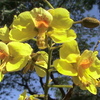 Sahíno | Saino | Caesalpinia eriostachys |
This tree is found from Mexico to Costa Rica in the Pacific and Central regions.It is most notable for its ornamental quality because of its yellow flowers.
Sahíno | Saino | Caesalpinia eriostachys |
This tree is found from Mexico to Costa Rica in the Pacific and Central regions.It is most notable for its ornamental quality because of its yellow flowers.
 Nacazcol | Surinam Powderpuff, Pink Powderpuff | Calliandra surinamensis |
Calliandra surinamensis is a low branching evergreen tropical shrub that is named after Suriname, a country in Northern South America. The plant usually has complexly branched multiple trunks and grows to a height of about 5 metres, although many sources suggest that it only attains a height of 3 metres. Left unpruned it grows long thin branches that eventually droop down onto the ground.
Nacazcol | Surinam Powderpuff, Pink Powderpuff | Calliandra surinamensis |
Calliandra surinamensis is a low branching evergreen tropical shrub that is named after Suriname, a country in Northern South America. The plant usually has complexly branched multiple trunks and grows to a height of about 5 metres, although many sources suggest that it only attains a height of 3 metres. Left unpruned it grows long thin branches that eventually droop down onto the ground.
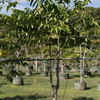 Ylang Ylang, Perfume Tree | Cananga odorata |
The flower of this tree has a phenomenal scent. This is used in the Perfume Chanel No. 5. It should be planted near a window, possibly near a bedroom to take full advantage of its scent at night. C. odorata is a fast-growing tree of the custard-apple family Annonaceae. Its growth exceeds 5 m (15 ft) per year[citation needed] and attains an average height of 12 m (40 ft). It grows in full or partial sun, and prefers the...
Ylang Ylang, Perfume Tree | Cananga odorata |
The flower of this tree has a phenomenal scent. This is used in the Perfume Chanel No. 5. It should be planted near a window, possibly near a bedroom to take full advantage of its scent at night. C. odorata is a fast-growing tree of the custard-apple family Annonaceae. Its growth exceeds 5 m (15 ft) per year[citation needed] and attains an average height of 12 m (40 ft). It grows in full or partial sun, and prefers the...
 Cañafistula | Golden Shower | Cassia fistula |
Native to the Indian Subcontinent and nearby regions of Southeast Asia this ornamental tree is best known for its glorious yellow flowers. When in bloom the flowers are so dense one often does not see the tree's leaves. Fairly drought tolerant. The tree has strong and very durable wood,
Cañafistula | Golden Shower | Cassia fistula |
Native to the Indian Subcontinent and nearby regions of Southeast Asia this ornamental tree is best known for its glorious yellow flowers. When in bloom the flowers are so dense one often does not see the tree's leaves. Fairly drought tolerant. The tree has strong and very durable wood,
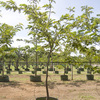 Carao | Pink Shower, Stinking Toe | Cassia grandis |
Cassia grandis, one of several species called Pink Shower Tree, and known as Carao in Spanish. Native to the neotropics it grows up to 30 m (98 ft). The species is distributed from southern México, to Venezuela andEcuador. It grows in forests and open fields at lower elevations, and is known to be planted as an ornamental. When in bloom this tree gives a phenomanal...
Carao | Pink Shower, Stinking Toe | Cassia grandis |
Cassia grandis, one of several species called Pink Shower Tree, and known as Carao in Spanish. Native to the neotropics it grows up to 30 m (98 ft). The species is distributed from southern México, to Venezuela andEcuador. It grows in forests and open fields at lower elevations, and is known to be planted as an ornamental. When in bloom this tree gives a phenomanal...
 Ceiba | Kapok, Silk-cotton tree | Ceiba pentandra |
A giant in the rainforests, the kapok tree can reach up to 200 feet in height, sometimes growing as much as 13 feet per year. Due to its extreme height, the kapok, or ceiba tree, towers over the other rainforest vegetation. The trunk can expand to nine or 10 feet in diameter. In the nooks and grooves of this huge plant live a diverse number of species including frogs, birds and bromeliads. The kapok tree is deciduous, shedding all of its leaves during the dry season....
Ceiba | Kapok, Silk-cotton tree | Ceiba pentandra |
A giant in the rainforests, the kapok tree can reach up to 200 feet in height, sometimes growing as much as 13 feet per year. Due to its extreme height, the kapok, or ceiba tree, towers over the other rainforest vegetation. The trunk can expand to nine or 10 feet in diameter. In the nooks and grooves of this huge plant live a diverse number of species including frogs, birds and bromeliads. The kapok tree is deciduous, shedding all of its leaves during the dry season....
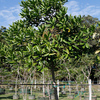 Palo de agua, mayo blanco, chancho | White Mahogany, White Yemeri, Creole | Vochysia guatemalensis |
Vochysia guatemalensis is a medium to large tree, 30-55 m tall with diameter of 0.5-1.5 m. The bole is cylindrical and sometimes bifurcate, with smooth and pale bark. The crown is rounded or depressed, the branchlets glabrous; stipules sublate, 3 mm long.
Palo de agua, mayo blanco, chancho | White Mahogany, White Yemeri, Creole | Vochysia guatemalensis |
Vochysia guatemalensis is a medium to large tree, 30-55 m tall with diameter of 0.5-1.5 m. The bole is cylindrical and sometimes bifurcate, with smooth and pale bark. The crown is rounded or depressed, the branchlets glabrous; stipules sublate, 3 mm long.
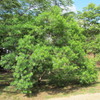
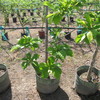 Surá | Surah guayabón | Terminalia oblonga |
Sura has a mostly straight trunk (80 cm or more) that has a mildly irregular cross-section. Though close to cylindrical, the bole is marked by lumps and shallow dents along its entire length. These irregularities are accentuated bye silky-smooth, thin bark that catches the eye with its unusual texture, sheen, and pale-orange color. Often Sura bark peals in randomly shaped but large, sheetlike sections. Large, thin, and planar buttress roots are always present, merging...
Surá | Surah guayabón | Terminalia oblonga |
Sura has a mostly straight trunk (80 cm or more) that has a mildly irregular cross-section. Though close to cylindrical, the bole is marked by lumps and shallow dents along its entire length. These irregularities are accentuated bye silky-smooth, thin bark that catches the eye with its unusual texture, sheen, and pale-orange color. Often Sura bark peals in randomly shaped but large, sheetlike sections. Large, thin, and planar buttress roots are always present, merging...
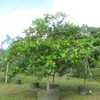 Beach almond, Bengal almond | Almendro de playa | Terminalia catappa |
Native to the tropical regions of Asia, Africa, and Australia the Beach almond is widely grown in the tropical regions of the world as ornamental tree. It is valued for its deep shade it provides through its large leaves. The fruit is edible, tasting slightly acidic.As the tree gets older, its crown becomes more flattened to form a spreading, vase shape. Its branches are distinctively arranged in tiers giving it a unique look. During the dry...
Beach almond, Bengal almond | Almendro de playa | Terminalia catappa |
Native to the tropical regions of Asia, Africa, and Australia the Beach almond is widely grown in the tropical regions of the world as ornamental tree. It is valued for its deep shade it provides through its large leaves. The fruit is edible, tasting slightly acidic.As the tree gets older, its crown becomes more flattened to form a spreading, vase shape. Its branches are distinctively arranged in tiers giving it a unique look. During the dry...
 Roble de Sabana | Pink trumpet tree, Savannah oak, | Tabebuia rosea |
Often planted in parks and gardens. It has beautiful crown of pink flowers during the dry season and offers wonderful shade during the rainy season. "The tree crown is wide, with irregular, stratified ramification and only few thick branches. The bark can be gray to brown, in varying darkness and may be vertically fissured. Leaves are compound,digitate and deciduous. Each leaf has five leaflets of...
Roble de Sabana | Pink trumpet tree, Savannah oak, | Tabebuia rosea |
Often planted in parks and gardens. It has beautiful crown of pink flowers during the dry season and offers wonderful shade during the rainy season. "The tree crown is wide, with irregular, stratified ramification and only few thick branches. The bark can be gray to brown, in varying darkness and may be vertically fissured. Leaves are compound,digitate and deciduous. Each leaf has five leaflets of...
 Cortez amarillo,Corteza, Guyacan, Piuva | Gold trumpet tree | Tabebuia ochracea |
During the driest of days, T. ochracea outdoes itself with a spectacular flower display. Most trees growing close together bloom in near unison, making an unforgettable show. T. ochraceais an open crowned tree. Its flowers are golden yellow and appear on bare branches, in bountiful terminal clusters. Each flower lasts for only one day, but the inflorescence may persist for up to 12 days. After flowering, many fuzzy and slightly curved pods...
Cortez amarillo,Corteza, Guyacan, Piuva | Gold trumpet tree | Tabebuia ochracea |
During the driest of days, T. ochracea outdoes itself with a spectacular flower display. Most trees growing close together bloom in near unison, making an unforgettable show. T. ochraceais an open crowned tree. Its flowers are golden yellow and appear on bare branches, in bountiful terminal clusters. Each flower lasts for only one day, but the inflorescence may persist for up to 12 days. After flowering, many fuzzy and slightly curved pods...
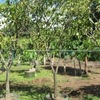 Cortez negro | Ipe | Tabebuia impetiginosa, |
Native to Costa Rica and distributed from Mexico to Northern Argentina. Its showy pink flowers during the dry season are spectacular. The wood has long been highly valued for years, known in the trade as "brazilwood". Although difficult to work with it is strong, dense, and insect resistant.
Cortez negro | Ipe | Tabebuia impetiginosa, |
Native to Costa Rica and distributed from Mexico to Northern Argentina. Its showy pink flowers during the dry season are spectacular. The wood has long been highly valued for years, known in the trade as "brazilwood". Although difficult to work with it is strong, dense, and insect resistant.
 Roble primavera | Guayacan trumpet tree | Tabebuia guayacan |
Guayacan- a rare and attractive tree from a mature rainforest has something unreal and magical. Discovering a blooming, shining yellow Guayacan is like finding a treasure. Guayacan let’s you foresee the starting date of the green season – the tree is said to bloom one month before the rains start.
The origin of Guayacan is in Central America, as well as the other countries in tropical America. The tree grows slowly and reaches up to 50 m (164 ft) tall...
Roble primavera | Guayacan trumpet tree | Tabebuia guayacan |
Guayacan- a rare and attractive tree from a mature rainforest has something unreal and magical. Discovering a blooming, shining yellow Guayacan is like finding a treasure. Guayacan let’s you foresee the starting date of the green season – the tree is said to bloom one month before the rains start.
The origin of Guayacan is in Central America, as well as the other countries in tropical America. The tree grows slowly and reaches up to 50 m (164 ft) tall...
 Coaba | Brazilian Mahagany, Big-leaf mahagany | Swietenia macrophylla |
Brazilian Mahagany can grow up to 70 meters tall with a 40 meters breadth including buttresses up to 5 meters . It is known for its beautiful wood.
Coaba | Brazilian Mahagany, Big-leaf mahagany | Swietenia macrophylla |
Brazilian Mahagany can grow up to 70 meters tall with a 40 meters breadth including buttresses up to 5 meters . It is known for its beautiful wood.
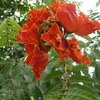 Llama del bosque | African Tulip Tree, Fountain tree | Spathodea campanulata |
Spathodea is a monotypic genus in the flowering plant family Bignoniaceae. The single species it contains, Spathodea campanulata, is commonly known as the Fountain Tree, African Tulip Tree,Pichkari or Nandi Flame. The tree grows between 7–25 m (23–82 ft) tall and is native to tropical dry forests of Africa.This tree is planted extensively as an ornamental...
Llama del bosque | African Tulip Tree, Fountain tree | Spathodea campanulata |
Spathodea is a monotypic genus in the flowering plant family Bignoniaceae. The single species it contains, Spathodea campanulata, is commonly known as the Fountain Tree, African Tulip Tree,Pichkari or Nandi Flame. The tree grows between 7–25 m (23–82 ft) tall and is native to tropical dry forests of Africa.This tree is planted extensively as an ornamental...
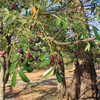
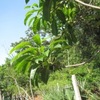 Tempisque tree | Yellow tapir | Sideroxylon capiri |
Native from Mexico to Panama. Grows in a variety of soils Grows on a range of soils, in dry and in some wetter. Sometimes grows isolated in pastures of secondary forest. It regenerates very sparingly.
Tempisque tree | Yellow tapir | Sideroxylon capiri |
Native from Mexico to Panama. Grows in a variety of soils Grows on a range of soils, in dry and in some wetter. Sometimes grows isolated in pastures of secondary forest. It regenerates very sparingly.
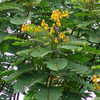 Saragundí | Saragundi | Senna retigulata |
Saragundí is a small tree native which grows up to a maximum of 6 meters. It is planted as an ornamental.
Saragundí | Saragundi | Senna retigulata |
Saragundí is a small tree native which grows up to a maximum of 6 meters. It is planted as an ornamental.
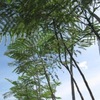 Gallinazo | Brazillian firetree | Schizolobium parahyba |
This tree is known for its fast growth of sometimes up to 3 meters a year. The wood is odorless, straw-colored, soft and light. Its density increases with age.The mature tree typically has a straight trunk, up to 40 meters tall and 80 cm wide, that branches out only near the top. The bark is smooth and gray-green except by the scars left by fallen leaves. The leaves are bipinnate, a metre or more in length, with a green stem and...
Gallinazo | Brazillian firetree | Schizolobium parahyba |
This tree is known for its fast growth of sometimes up to 3 meters a year. The wood is odorless, straw-colored, soft and light. Its density increases with age.The mature tree typically has a straight trunk, up to 40 meters tall and 80 cm wide, that branches out only near the top. The bark is smooth and gray-green except by the scars left by fallen leaves. The leaves are bipinnate, a metre or more in length, with a green stem and...
 Guayaquil, Gavilan | Guachapele | Pseudosamanea guachapele |
A large tree with a spreading crown, well-formed bole without significant buttresses.Habitat :Often near rivers or waterway is in dry and wet forests, sometimes isolated in pastures, indicating ancient meanders.Phenology:Flowers seen in January, February, March,April and December. Fruits observed in March.Uses:It has been used for diarrhea and as piscicida in Panama. Heartwood light orange brown when freshly cut becoming yellow brown or brown with a golden luster on...
Guayaquil, Gavilan | Guachapele | Pseudosamanea guachapele |
A large tree with a spreading crown, well-formed bole without significant buttresses.Habitat :Often near rivers or waterway is in dry and wet forests, sometimes isolated in pastures, indicating ancient meanders.Phenology:Flowers seen in January, February, March,April and December. Fruits observed in March.Uses:It has been used for diarrhea and as piscicida in Panama. Heartwood light orange brown when freshly cut becoming yellow brown or brown with a golden luster on...
 Plumeria rosada | Frangipani (pink) | Plumeria |
The genus consists of shrubs and trees deciduous. P. rubra native to Mexico , Central America , and Venezuela , produces yellow flowers or pink depending on the type of culture. From Mexico, Plumeria has spread throughout all tropical regions of the world, particularly in Hawaii ( United States ), where it is grown so abundantly that is believed to be a native flower. It...
Plumeria rosada | Frangipani (pink) | Plumeria |
The genus consists of shrubs and trees deciduous. P. rubra native to Mexico , Central America , and Venezuela , produces yellow flowers or pink depending on the type of culture. From Mexico, Plumeria has spread throughout all tropical regions of the world, particularly in Hawaii ( United States ), where it is grown so abundantly that is believed to be a native flower. It...
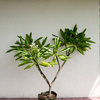 Flor Blanca | Frangipani (white) | Plumeria rubra, |
Plumeria (common name Frangipani[citation needed]) is a genus of flowering plants in the dogbane family,Apocynaceae.[1] It contains seven or eight species of mainly deciduous shrubs and small trees. They are native to Central America, Mexico, the Caribbean, and South America as far south as Brazil [2] but can be grown in tropical and sub-tropical...
Flor Blanca | Frangipani (white) | Plumeria rubra, |
Plumeria (common name Frangipani[citation needed]) is a genus of flowering plants in the dogbane family,Apocynaceae.[1] It contains seven or eight species of mainly deciduous shrubs and small trees. They are native to Central America, Mexico, the Caribbean, and South America as far south as Brazil [2] but can be grown in tropical and sub-tropical...
 Cristobal, Granadillo | Trebol, Macacauba, Macawood | Platymiscium spp |
The Cristobal, also known as Granadillo, grows throughout Continental tropical America from southern Mexico to the Brazilian Amazon region, and Trinidad. It can grow up to 80 feet with a diameter ranging from 28 to 42 inches.
Cristobal, Granadillo | Trebol, Macacauba, Macawood | Platymiscium spp |
The Cristobal, also known as Granadillo, grows throughout Continental tropical America from southern Mexico to the Brazilian Amazon region, and Trinidad. It can grow up to 80 feet with a diameter ranging from 28 to 42 inches.
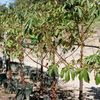 Pochote | Pochote | Pachira quinata |
Pachira quinata, commonly known as Pochote, is a species flowering tree in the mallow family, Malvaceae. It inhabits dry forests in Costa Rica,Nicaragua, Honduras Panama, Venezuela, and Colombia.[2] Pochotes bear large, stubby thorns on their trunk and branches and are often planted as living fence posts with barbed wire strung between them. Those thorns are also often used to make...
Pochote | Pochote | Pachira quinata |
Pachira quinata, commonly known as Pochote, is a species flowering tree in the mallow family, Malvaceae. It inhabits dry forests in Costa Rica,Nicaragua, Honduras Panama, Venezuela, and Colombia.[2] Pochotes bear large, stubby thorns on their trunk and branches and are often planted as living fence posts with barbed wire strung between them. Those thorns are also often used to make...
 Orgullo de la India | Queen's Crape-myrtle, Pride of India | Lagerstroemia speciosa |
This decorative tropical comes from southern Asia and is known as Giant Crape-myrtle.
Orgullo de la India | Queen's Crape-myrtle, Pride of India | Lagerstroemia speciosa |
This decorative tropical comes from southern Asia and is known as Giant Crape-myrtle.
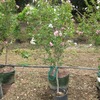 ÁRBOL DE JÚPITER | Crape myrtle | Lagerstroemia indica |
Small ornamental tree or shrub that comes in various shades. Trunk structure and texture is also appealingFrom China, Korea, Japan and Indian SubcontinentLagerstroemia indica is an often multistemmed,deciduous tree with a wide spreading, flat topped, open habit when mature.The bark is a prominent feature being smooth, pinkinsh-gray and mottled, shedding each year. Leaves are small and dark green changing to yellow and orange in...
ÁRBOL DE JÚPITER | Crape myrtle | Lagerstroemia indica |
Small ornamental tree or shrub that comes in various shades. Trunk structure and texture is also appealingFrom China, Korea, Japan and Indian SubcontinentLagerstroemia indica is an often multistemmed,deciduous tree with a wide spreading, flat topped, open habit when mature.The bark is a prominent feature being smooth, pinkinsh-gray and mottled, shedding each year. Leaves are small and dark green changing to yellow and orange in...
 Jacaranda | Jacaranda, Black Poui, Fern tree | Jacaranda mimosifolia |
Jacaranda mimosifolia is a sub-tropical tree native to South America that has been widely planted elsewhere because of its beautiful and long-lasting blue flowers.http://en.wikipedia.org/wiki/Jacaranda_mimosifolia
Jacaranda | Jacaranda, Black Poui, Fern tree | Jacaranda mimosifolia |
Jacaranda mimosifolia is a sub-tropical tree native to South America that has been widely planted elsewhere because of its beautiful and long-lasting blue flowers.http://en.wikipedia.org/wiki/Jacaranda_mimosifolia
 Guapinol | West Indian Locust, Stinking toe | Hymenaea courbaril |
Although Jatobá is sometimes referred to as Brazilian cherry or South American cherry, it is not a cherry tree but a legume belonging to the Fabaceaefamily. Depending on the locale, Jatobá is also known as Brazilian copal, South American locust, or the West Indian locust. It is also known asstinking toe, old man's toe or stinktoe[1] because of the unpleasant odor of...
Guapinol | West Indian Locust, Stinking toe | Hymenaea courbaril |
Although Jatobá is sometimes referred to as Brazilian cherry or South American cherry, it is not a cherry tree but a legume belonging to the Fabaceaefamily. Depending on the locale, Jatobá is also known as Brazilian copal, South American locust, or the West Indian locust. It is also known asstinking toe, old man's toe or stinktoe[1] because of the unpleasant odor of...
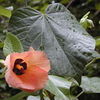 Majagua | Beach hibsicus | Hibiscus tiliaceus |
Grown throughout the tropics as an ornamental shrub or small tree. The combination of the flowers which bloom for one day changing from yellow to bright red, the dense heart shaped spiral growing evergreen leaves, and smooth gray trunk make this a winner.
Majagua | Beach hibsicus | Hibiscus tiliaceus |
Grown throughout the tropics as an ornamental shrub or small tree. The combination of the flowers which bloom for one day changing from yellow to bright red, the dense heart shaped spiral growing evergreen leaves, and smooth gray trunk make this a winner.
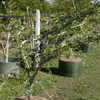 Guayacán real | Lignumvitae | Guaiacum sanctum |
This species is very scarce and highly valued for its wood, oil, and various medicinal properties like resin used in the US and Europe. They grow extremely slowly. The story goes it was thought to also cure syphillis causing much of the original trees to be cut down by Spanish explorers. We had the opportunity to see one glorious specimen reported to be over 1200 years old. The young bark is interesting and soft and cork like in nature. In...
Guayacán real | Lignumvitae | Guaiacum sanctum |
This species is very scarce and highly valued for its wood, oil, and various medicinal properties like resin used in the US and Europe. They grow extremely slowly. The story goes it was thought to also cure syphillis causing much of the original trees to be cut down by Spanish explorers. We had the opportunity to see one glorious specimen reported to be over 1200 years old. The young bark is interesting and soft and cork like in nature. In...
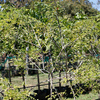 Madera negra, mata raton | Gliricidia | Gliricidia sepium |
Gliricidia sepiumis a medium-sized tree and can grow from 10 to 12 meters high. The bark is smooth and its color can range from a whitish gray to deep red-brown. is found on volcanic soils in its native range in Central America and Mexico. However, it can also grow on sandy, clay and lime stone soils.http://en.wikipedia.org/wiki/Gliricidia_sepium
Madera negra, mata raton | Gliricidia | Gliricidia sepium |
Gliricidia sepiumis a medium-sized tree and can grow from 10 to 12 meters high. The bark is smooth and its color can range from a whitish gray to deep red-brown. is found on volcanic soils in its native range in Central America and Mexico. However, it can also grow on sandy, clay and lime stone soils.http://en.wikipedia.org/wiki/Gliricidia_sepium
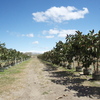 Higueron rojo | Rubber tree | Ficus elastica |
This tree tolerates drought and yet also likes humidity. great for the Guanacaste region. It gives instant privacy protection with its spreading structure and wide massive leaves. We have used it successfully as wind blocking tall hedges to protect our growing fields. It is a large tree in the banyan group of figs, growing to 30–40 metres (98–130 ft) (rarely up to 60 metres or 200 feet) tall, with a stout trunk up to 2 metres...
Higueron rojo | Rubber tree | Ficus elastica |
This tree tolerates drought and yet also likes humidity. great for the Guanacaste region. It gives instant privacy protection with its spreading structure and wide massive leaves. We have used it successfully as wind blocking tall hedges to protect our growing fields. It is a large tree in the banyan group of figs, growing to 30–40 metres (98–130 ft) (rarely up to 60 metres or 200 feet) tall, with a stout trunk up to 2 metres...
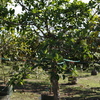 White mata palo | Strangler fig | Ficus costaricana |
Broad shiny leaves, sculptural in feel, scenic impression in fields, good wind breakers etc. Sculptural feel to the tree and when mature wonderfully wide mushroom canopy.
White mata palo | Strangler fig | Ficus costaricana |
Broad shiny leaves, sculptural in feel, scenic impression in fields, good wind breakers etc. Sculptural feel to the tree and when mature wonderfully wide mushroom canopy.
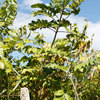 Almendro de montaña | Tonka bean tree | Dipterix panamensis |
Almendro de montaña is native and only grows in southern Nicaragua, Costa Rica, Panama, and Colombia. Dipteryx panamensis is a large-size tree that can reach 60 m (197 feet) in height and 1 to 1.6 m (3.25 to 5.25 feet) in diameter. Some reach 2 m (6.5 feet) in diameter. It has a cylindrical trunk with ample basal roots but without buttresses (over very humid soils, basal roots could grow higher, seeming like buttresses although they are not)....
Almendro de montaña | Tonka bean tree | Dipterix panamensis |
Almendro de montaña is native and only grows in southern Nicaragua, Costa Rica, Panama, and Colombia. Dipteryx panamensis is a large-size tree that can reach 60 m (197 feet) in height and 1 to 1.6 m (3.25 to 5.25 feet) in diameter. Some reach 2 m (6.5 feet) in diameter. It has a cylindrical trunk with ample basal roots but without buttresses (over very humid soils, basal roots could grow higher, seeming like buttresses although they are not)....
 Guachipelin | American Diphysa | Diphysa americana |
A slow growing native decidous tree that creates a carpet of beautiful yellow when it is in bloom
Guachipelin | American Diphysa | Diphysa americana |
A slow growing native decidous tree that creates a carpet of beautiful yellow when it is in bloom
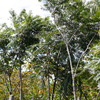 Iguano, Largartillo | Iguano | Dilodendron costaricense |
Grows in seasonally wet forests to dry. It is used infrequently as an ornamental species in urban areas and in a limited way as a timber species.http://darnis.inbio.ac.cr/ubis/FMPro?-DB=UBIPUB.fp3&-lay=WebAll&-error=norec.html&-Format=detail.html&-Op=eq&id=848&-Find
Iguano, Largartillo | Iguano | Dilodendron costaricense |
Grows in seasonally wet forests to dry. It is used infrequently as an ornamental species in urban areas and in a limited way as a timber species.http://darnis.inbio.ac.cr/ubis/FMPro?-DB=UBIPUB.fp3&-lay=WebAll&-error=norec.html&-Format=detail.html&-Op=eq&id=848&-Find
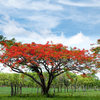 Malinche | Royal Poinciana, Flamboyant | Delonix regia |
True to the name, flamboyant tree has spectular red orange flowers that can not go unnoticed. Originally from Madagascar it is a tropical decorative favorite. The shape of the tree is also appealing including its fern like leaves
Malinche | Royal Poinciana, Flamboyant | Delonix regia |
True to the name, flamboyant tree has spectular red orange flowers that can not go unnoticed. Originally from Madagascar it is a tropical decorative favorite. The shape of the tree is also appealing including its fern like leaves
 Jicaro | Calabash tree | Crescentia cujete |
Unusual ornamental tree . Often seen in the fields in Guanacaste. The flowers and gourds grow directly off the trunks and branches. The tree is resilent. When the fields are burned these trees seem to survive fine.
Jicaro | Calabash tree | Crescentia cujete |
Unusual ornamental tree . Often seen in the fields in Guanacaste. The flowers and gourds grow directly off the trunks and branches. The tree is resilent. When the fields are burned these trees seem to survive fine.
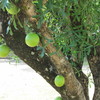
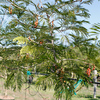 Lorito, Ardillo | Wild tamarind | Cojoba arborea |
Native Costa Rican ornamental tree which grows from Mexico to South America and the Antilles. The tree has a beautiful structure, fern like leaves, with dramatic interesting bright red orange oblong twisted fruit. The fruit has a whimsical sense of something out of a Dr. Seuss children's book.
Lorito, Ardillo | Wild tamarind | Cojoba arborea |
Native Costa Rican ornamental tree which grows from Mexico to South America and the Antilles. The tree has a beautiful structure, fern like leaves, with dramatic interesting bright red orange oblong twisted fruit. The fruit has a whimsical sense of something out of a Dr. Seuss children's book.
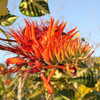 Poro variegado | Tiger's Claw, East Indian Coral Tree, | Erythrina variegata |
Native to just about all of tropical Asia and northern Africa (some claim also Australia), this large tree is a very commonly grown tree in cultivation, though not so much in southern California where it is an extremely marginal species. It is grown not only for its brilliant red-orange horn-of-plenty shaped flowers, but for its commonly variegated leaves as well (not all trees have variegated leaves). Flowering is generally in mid to late...
Poro variegado | Tiger's Claw, East Indian Coral Tree, | Erythrina variegata |
Native to just about all of tropical Asia and northern Africa (some claim also Australia), this large tree is a very commonly grown tree in cultivation, though not so much in southern California where it is an extremely marginal species. It is grown not only for its brilliant red-orange horn-of-plenty shaped flowers, but for its commonly variegated leaves as well (not all trees have variegated leaves). Flowering is generally in mid to late...
